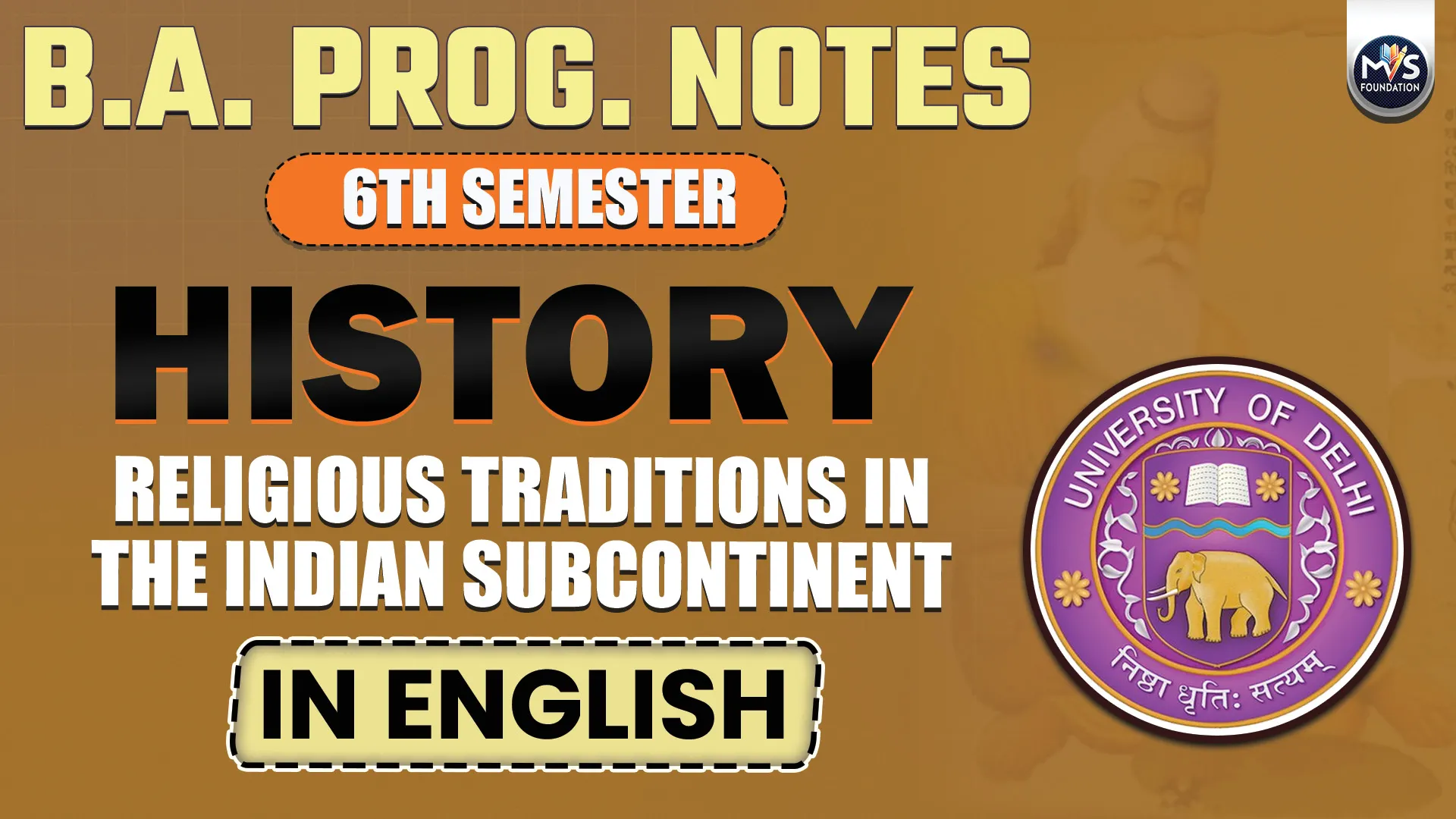
Get in Touch
We will get back to you within 24 hours.
Welcome to MVS Blog

Q.1 - Discuss the main features of the Rigvedic and Later Vedic religious traditions.
Or
Discuss the main features of the religious tradition contained in the Rigveda.
Ans: The Rigvedic and Later Vedic periods represent two important phases in the development of religious traditions in the Indian subcontinent. The Rigvedic period (1500-1000 BCE) reflects the early stage of Vedic religion, while the Later Vedic period (1000-600 BCE) shows maturity in religious thought and philosophical depth. A comparison of the religious traditions of these two periods helps in understanding the gradual evolution of Indian religious consciousness.
Rigveda - The Rigveda is the oldest and most important of the Vedas. It is divided into ten sections, known as Mandalas, and contains over a thousand mantras. Composed in Sanskrit, it is a part of the broader Vedic corpus, which also includes the Yajurveda, Samaveda, and Atharvaveda.
Rigvedic and Later Vedic Religious Traditions
The Rigvedic period represents the earliest religious era in India. During this time, people worshipped nature gods such as Indra, Agni, and Varuna. Yajnas (sacrificial rituals) and mantras held great importance. Life was simple, and religion was not showy. Women were also allowed to participate in religious activities.
In the Later Vedic period, religion became more complex and ritualistic practices increased. The focus shifted towards concepts like meditation, the soul, and liberation (moksha). The role of the Brahmins grew significantly, and social hierarchies became more pronounced. New religious texts like the Upanishads were composed, emphasizing knowledge and liberation. During this time, religion became a subject of deep philosophical thought.
Main features of Rigvedic and Later Vedic religious traditions:
1. Role of Gods - In the Rigvedic period, gods related to nature like Indra, Agni, Varun were prominent. They were worshipped through yajnas. In the Later Vedic period, the concept of Brahma, Vishnu and Shiva emerged. Here, there was more emphasis on soul, Brahma and salvation. The place of gods now moved towards spiritual power.
2. Yajnas and Rituals - In the Rigvedic period, yajnas (sacrificial rituals) were communal and meant to appease the forces of nature. They were simple and required minimal resources. In the Later Vedic period, yajnas became highly complex, elaborate, and dominated by priests. Ritualism gained prominence, and the primary goal shifted to attaining heaven. This strengthened the position of the Brahmins in society
3. Development of Philosophical Thought In the Later Vedic period, through the Upanishads, there was deep reflection on subjects like the soul (atman), the universal spirit (Brahman), and liberation (moksha). In the Rigvedic period, such philosophical perspectives were minimal. This shift indicates a growing orientation toward knowledge. The concepts of self-reflection and liberation became central, laying the foundation for Vedanta philosophy.
4. Social Structure The Rigvedic society was relatively simple and dynamic. The varna system was based on one's actions (karma). In the Later Vedic period, the varna system became rigid and birth-based. Social classes became permanent. This gave religious sanction to social inequality.
5. Status of Women In the Rigvedic period, women had the right to participate in yagnas and to get education. Scholars like Gargi and Maitreyi were famous. In the Later Vedic period, the status of women started declining. They were deprived of education and religious activities. This led to the establishment of a male-dominated society.
6. Form of religious texts - In the Rigvedic period, Rigveda was the main text which included hymns and mantras. In the Later Vedic period, texts like Brahman, Aranyak and Upanishad were composed. In these, the explanation of yajnas and philosophical elements were discussed. Upanishads clarified the concept of soul and Brahma. Religious literature now became more philosophical.
7. Religious Purposes - The aim of Rigvedic religion was to please the gods and attain material comforts. In the Later Vedic period, religion became focused on liberation (moksha) and purification of the soul. The purpose of religious practices now shifted toward spiritual advancement. This shift reflected a deeper introspection within religion. The concept of liberation led to the development of yoga and meditation.
8. Relation between Dharma and Artha - In the Rigvedic period, there was a balance between Dharma and Artha importance was also given to the material aspect of life. In the Later Vedic period, salvation was considered the main goal by abandoning Artha and Kama. Ashram religions like Sanyas and Brahmacharya were established. The feeling of detachment from materialism increased. This led to the emergence of the Sanyas tradition.
Conclusion
The religious traditions of the Rigvedic and Later Vedic periods reflect the depth of Indian religion and philosophy. While the Rigvedic period was materialistic and nature-based, the Later Vedic period represents spiritual and philosophical depth. Together, these two phases laid a strong foundation for Indian religious thought. Their influence can still be seen in Indian society and religious traditions today.
0 Response